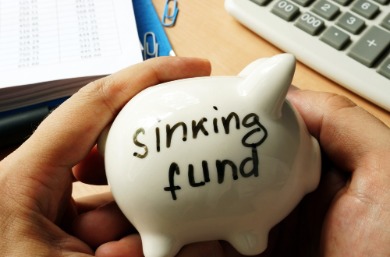As a leaseholder of a flat or apartment you may be required as part of the terms of your lease to pay into a sinking fund each year.
This charge may be included as part of your overall annual service charge, or it could be a separate amount collected by your landlord or the management company that looks after your property.
What is a sinking fund and why is it needed?
Sometimes referred to as a reserve fund, a sinking fund helps spread the cost of major works such as replacing a roof, boiler or lift or making expensive structural repairs to the property.
While your service charge covers the regular, more predictable costs incurred through the day-to-day management of the property, such as cleaning communal areas and arranging building insurance, the sinking fund is used for costs that occur infrequently or unexpectedly.
A well-managed sinking fund benefits both the landlord and the leaseholders. As well as ensuring the landlord or property management company can plan for proper maintenance of the building knowing the money to pay for it will be available, it also means leaseholders shouldn’t need to contribute large amounts of money at the time when work is needed.
Another benefit of a sinking fund is that the cost of major items is spread across the life of the property and shared amongst all the leaseholders who have owned it, whether or not they happen to be a leaseholder at the time the work takes place.
For this reason, money you contribute to the sinking fund is not refundable when you sell your leasehold of the property. It does, however, add value to the property and gives peace of mind to any purchasers that the property is being managed proactively and plans are in place for future liabilities.
How is the amount needed for the sinking fund worked out?
The amount you pay annually towards the sinking fund depends upon what works are expected to be needed on your block or development over the coming years and the estimated costs for these.
This information is collated based on the views of qualified surveyors, property maintenancespecialists and contractors, who will take into account the costs of things like internal and external decoration, roof repairs and the replacement of things like lifts, fire alarm systems, electrical systems and communal doors and windows.
What if there isn’t enough money in the sinking fund to pay for required works?
If there isn’t enough money in the sinking fund to cover the full cost of major works – perhaps because of damage to the property that means essential work is needed unexpectedly, or because the cost of completing a piece of work has risen dramatically since the budget for the sinking fund was prepared – leaseholders may need to make up the balance through the service charge.
The terms of your lease and the annual account for your leasehold will tell you whether a sinking fund is in place for your block. If there is one, and you want to find out what it covers and how it’s calculated, get in touch with the management company for your block.

